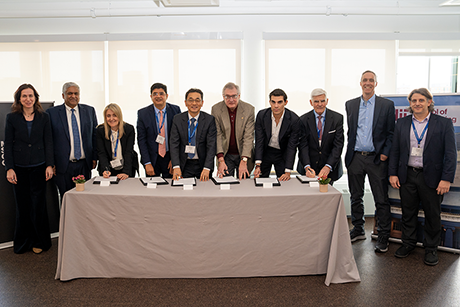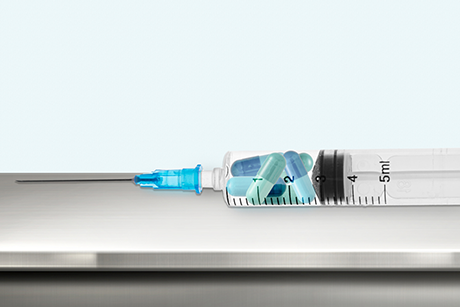MechE Alumna Catches Rare Glimpse of Marine Life
Grace Young recalls Edgerton-Cousteau friendship.
MechE alumna Grace Young ’14 has experienced something that few people in the world ever will: life underwater.
As part of Mission 31, a project led by Fabien Cousteau, the grandson of legendary Jacques Cousteau, Young spent 15 days this past June living aboard Aquarius, a special underwater laboratory bolted to the seafloor 60 feet deep.
An ocean engineering major, Young fell in love with water at an early age. But Mission 31 gave her an up-close-and-personal view into ocean life that she never imagined she would see. Living on Aquarius, Young acclimated to the nitrogen levels of deep-sea life and could spend entire days on the seafloor conducting in-depth research and taking rare high-speed video footage of marine life. Using an Edgertronic high-speed camera for the first time underwater, she was able to capture deep-sea behavior that otherwise occurs so quickly that the naked eye can’t catch it.
Young’s participation in Fabien Cousteau’s research mission recalls fond memories of the fruitful collaborations and long-time friendship between Jacques Cousteau and renowned MIT engineer Harold “Doc” Edgerton, the namesake of MIT’s Edgerton Center.
A visionary in underwater photography, Edgerton first met Jacques Cousteau in 1952 when he was asked to improve underwater lighting techniques and camera equipment. Edgerton accompanied Cousteau on several oceanic explorations throughout the years, developing, among other things, a “pinger” — a sonar device that detected a camera’s location in relation to the ocean floor and triggered the camera and lights to turn on when it reached the target area.
Approximately 60 years later, Grace Young employed a high-speed Edgertronic camera, developed by Mike Matter ’84, to record the movements of underwater marine life, such as the mantis shrimp as it sprung up from the sand to grab a goby fish. While she was recording, Young couldn’t discern the mechanics of the mantis shrimp’s attack, but later she could make out the specifics of the feeding behavior when she replayed it in slow motion.
“This mission has made my love and respect for the ocean even deeper,” says Young. “It was my home for 15 days, and now I am dedicated to using my skills and engineering knowledge to help us better understand and protect the oceans.”
Young’s high-speed underwater photography will be on display at MIT's Wiesner Art Gallery starting Jan. 4, 2015. Young's Kickstarter page to fund the exhibit is available here.
If you’re interested in reading more about Young’s underwater research, follow her blog at graceunderthesea.com.


